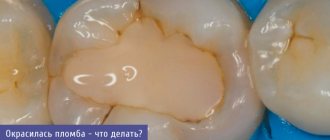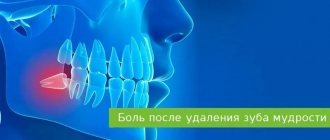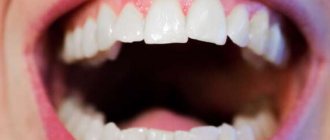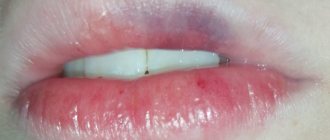You can contact Dr. Granov's clinic for treatment of jaw injuries. This is one of the areas of treatment that we do.
The jaw is the bony structure that holds the teeth in place. The upper jaw does not move, only the lower jaw moves. Its movements are necessary for eating food and for producing speech. Both jaws connect at a point called the temporomandibular joint (TMJ).
Jaw injuries include cracks, dislocations and fractures. With a fracture or crack, the bone breaks; with a dislocation, the bone changes location and flies out of the joint. Such injuries occur after physical activity (bruise, blow, fall). After appropriate treatment, they heal safely, but the dislocation may appear again.
Jaw injuries are dangerous because they can lead to various complications. Among them:
- breathing disorder,
- bleeding,
- blood entering the lungs
- problems with chewing food,
- problems with diction,
- infection of the jaw or facial structures,
- joint pain,
- numbness of the jaw or face,
- tooth displacement,
- edema.
Symptoms of a jaw fracture:
- pain in the cheek next to the ear, which increases with jaw movement;
- swelling of the face, blood in the mouth;
- immobility of the jaw, inability to open or close the mouth;
- when opening the mouth, only one side of the jaw moves;
- jaw pain that gets worse when chewing;
- dental injuries;
- swelling of the face or changes in the contours of the jaw;
- numbness of the face in the lower lip area.
Symptoms of a dislocated jaw:
- pain in the cheek next to the ear, which increases with jaw movement;
- feeling that the jaw is not positioned correctly in the joint;
- violation of diction;
- inability to close your mouth;
- drooling due to open mouth;
- spasm of the masticatory muscles or protrusion of the jaw forward;
- dental injuries.
First aid for jaw injuries
Jaw injuries require immediate medical attention. Call an ambulance or go to the nearest hospital. Before doctors arrive, you can put a bandage on your jaw to keep it immobilized. The bandage should be easy to remove.
Do not try to set a dislocation yourself or wait for the fracture to heal on its own. Be sure to contact a traumatologist.
Causes of bruises of the lower and upper jaw
- collisions with surfaces;
- various types of blows (during road accidents, collisions with other people, domestic fights, contact sports, accidental blows with objects, etc.);
- falling onto a hard surface.
Most often, signs of a bruise and fracture of the jaw occur in people against the background of road accidents, domestic conflicts, or industrial emergencies. In most cases, it is the lower jaw that is susceptible to bruises.
The severity and nature of the injury also depend on the following factors:
- collision zones;
- the type (and sharpness) of the object that had a detrimental effect on the bone;
- speed of collision or approach with an object;
- condition of facial tissues and bones during mechanical trauma.
Treatment of jaw dislocation
A dislocated jaw is treated simply: the doctor realigns the joint, placing the bone in the right place. Muscle relaxants or painkillers may be needed to relax tight muscles.
Then the jaw must be secured in a stationary state. To do this, the doctor applies a bandage. If the dislocation does not appear for the first time, then surgery will be needed to straighten it.
Recovery after a dislocation lasts 6 weeks. At this time, you should not open your mouth wide. When yawning and sneezing, the lower jaw should be supported with your hands.
The main symptoms of a jaw bruise
- pain in the bruised area, which becomes especially severe with pressure and movement;
- inflammation of the lymph nodes;
- difficulties in speaking;
- it becomes painful for a person to chew;
- there is a loss of strength;
- a lump may form on the jaw;
- temperature rises;
- the jaw goes numb;
- swelling, redness, swelling, and hematomas are noticeable in the area of contact with an object or hard surface.
Unlike the symptoms of fractures, with bruises the jaw connects to the skull. Violation of the connection, as a rule, occurs in fractures (open and closed), dislocation, fracture, etc.
Folk remedies
There are several proven, simple and at the same time effective ways to have the positive effects of alternative medicine. They are indispensable products for pregnant women, children, as well as people who have a severe allergic reaction to medications. You can make a choice based on personal preferences or doctor’s recommendations.
Treatment at home for bruises can be carried out using the following means:
- Table salt solution. Compresses are prepared from it, which are used for any complexity of bruises. To prepare, a tablespoon of salt is dissolved in 150 ml of boiled water. Then take a sterile bandage, soak it in the solution and apply it to the problem area. The compress is covered with a thick cloth on top. The gauze pad with salt can be left overnight.
- Grated potatoes. The tubers should be washed and cleaned first. Grate one tuber on a coarse grater, place in linen cloth and wrap several times. After applying the bruise, cover the top with a thick towel. Compressor exposure time is 30-40 minutes. For best results, make 3-4 applications in a row.
- Cabbage leaf. Before applying it, you should knead it a little or make cuts on it to let the juice out. The sheet is applied to the sore spot 2-4 times a day until it dries completely.
- Onion and garlic. The two ingredients are ground and mixed together. The resulting slurry is added with half a tablespoon of salt; it is recommended to wrap the mixture in gauze and place it in the area of the bruise.
- Beetroot and liquid honey. Finely grated root vegetables are mixed with a tablespoon of natural honey. The procedure is carried out 1-2 times a day for 2 hours.
- Laundry soap. This remedy helps reduce the pain response. The soap is grated and mixed with raw chicken yolk. I apply a compress every half hour up to 6-8 times a day. You can also rub a damp cloth with laundry soap and apply an application to the bruised area.
- Apple vinegar. This is one of the most effective remedies. To prepare the solution, you need to take 2 teaspoons of vinegar and dilute it in 1 liter. water. Soak a clean cloth in the solution and apply 3-4 times a day for half an hour.
Popular folk remedies for bruises
The video in this article shows how to properly apply a warm and cold compress for bruises.
What to do if your jaw hurts?
If your jaw hurts, it hurts to chew, and the above symptoms are also observed, you should urgently contact a jaw surgeon-traumatologist.
First aid for such injuries looks like this:
- apply a bandage;
- use cold (applications made of ice, snow, frozen objects wrapped in fabric or polyethylene);
- rest until examined by a doctor;
- if your jaw hurts badly on the right or left, you can take a painkiller.
Until the doctor examines you, you should never heat the bone or place it in direct sunlight, so as not to provoke a deterioration in the patient’s condition.
Tooth pain after being hit in the face
Despite their strong structure, our teeth are susceptible to damage due to mechanical stress. A hit to the face can immediately provoke a number of problems with them. Perhaps the most unpleasant of them is tooth pain - a symptom indicating the seriousness of damage to the injured area. How can you quickly get rid of this problem?
Causes
The blow to the face itself may occur on some other part of the head, but pain in the tooth will still most likely occur. By all indicators, this injury is a typical bruise - a closed injury without violating the integrity of the damaged object in anatomical terms. With it, the tooth remains in place, without changing its position relative to the jaw and other teeth, but some parts of it are affected. The mechanism of a bruise is simple: damage occurs to the dental ligaments, which fix the tooth in place and attach it to the jaw bone. With a strong impact, there is even a serious risk of their complete rupture. A severe tooth bruise can lead to tangible consequences. First, there is the possibility of damage to the dental nerve, which can lead to loss of sensitivity. Secondly, a blow to the face can also cause destruction of the dental pulp, which can lead to tooth loss. In this case, pain becomes a signal that dental problems require an immediate solution.
Main symptoms of tooth bruise
Knowledge of the symptoms of a tooth bruise will help you in correctly recognizing the nature of the damage. As a rule, experts identify four main characteristics of a bruised tooth:
- Severe pain (especially in the first few hours after a blow to the face), problems with a correct and painless bite.
- A feeling that the tooth has changed its position relative to the jawbone and other teeth (the victim begins to feel as if the tooth is located a little higher or is bent to the side).
- When blood vessels and the dental nerve rupture, the tooth itself may change color to pink (due to the release of blood inside it). After a few days, the color may change from pink to dark brown (after blood clotting).
- A good indicator of a bruised tooth is the gum near it: if there is damage, it will be inflamed, and the tooth itself may be slightly mobile.
How to cure a bruised tooth?
First aid for a bruised tooth after a blow to the face is to reduce pain. The victim should apply a cold compress to the injury site to help relieve swelling. You should avoid eating solid food for three to five days after the injury. If the pain is too acute, then it is recommended to use such powerful painkillers as analgin, paracetamol or tempalgin. We remind you that in any case you will have to see a specialized doctor: as mentioned above, after a blow to the face there is a risk of rupture of the dental nerve or destruction of the pulp, and therefore in order to avoid complications you will definitely need the help of a professional.
Diagnosis and treatment of jaw bruises
For minor injuries, including cracks in the jaw, hospitalization of the patient is not necessary. The following steps are used for diagnostics:
- general examination by a dentist, maxillofacial surgeon, orthopedist-traumatologist. You may need to consult a neurologist (for example, in the case of a parallel concussion) or an otolaryngologist (if the ENT organs are affected);
- radiography of the maxillofacial area;
- computed tomogram (CT).
Based on the existing picture of the patient’s health condition, treatment will be prescribed. Main stages of therapy:
- creating maximum rest for the patient (bed rest);
- applying a pressure bandage;
- warming procedures for the regeneration of hematomas and restoration of damaged tissues (you can use dry heat, a lamp, ozokerite applications and other physiotherapy procedures);
- use of painkillers.
To avoid negative consequences, you need to provide competent and timely medical care to the victim, undergo diagnostics in a trusted clinic, and follow all the doctor’s recommendations and prescriptions.
Treatment of a jaw fracture
Treatment depends on the extent of the fracture. If the patient has a small crack in the bone, it will heal on its own. The doctor will only prescribe a painkiller.
Severe fractures require surgery to allow the bones to heal properly. After surgery, a bandage is applied to the jaw to allow it to heal quietly. The jaw takes 6 to 8 weeks to heal. At first, elastic bandages are additionally applied, which are then removed to allow the muscles to be developed and their mobility restored.
During treatment you can eat only liquid food. You should always have scissors with you to cut bandages in case the patient suddenly chokes on something or starts vomiting. Then go to the hospital to have a new bandage applied.
What happens if you don’t seek help in time?
- post-traumatic periostitis or inflammation of the periosteum;
- jaw deformation;
- inflammatory process of bone tissue;
- contractures or weakening of joint mobility;
- development of tumor processes (oncology).
Thus, if any mechanical injuries occur in the relevant area, it is imperative to contact a medical facility. The sooner you visit an experienced doctor, the sooner you will eliminate complications and return to a normal lifestyle.
First aid
Before proceeding with the treatment of the emerging pathology, the victim should be given first aid and taken for examination to a traumatologist in order to refute more serious damage to the bones of the skull (fracture, dislocation, displacement).
First of all, it is necessary, using available auxiliary items, to ensure cooling of the injured area. If the injury occurred at home, it is recommended to apply ice, frozen meat, vegetables or fruits to the bruised area of skin.
It is worth remembering that direct contact of the cold compress with the skin is not allowed. It is better to wrap ice products with a towel, rag or bag.
If the injury occurred on the street or in another place where it is not possible to get ice from the refrigerator, doctors recommend using snow, rags (pieces of things) soaked in cold water, bottles of cold water or iron tools. In such situations, it is also very important to avoid direct contact of the object with the skin, because you can introduce an unfavorable infection into the resulting wound area.
To eliminate excessively intense pain, you can take a non-steroidal painkiller.
Under no circumstances should heating the damaged area be allowed. Such manipulations do not improve, but only worsen the situation.
The jaws, the field of a cold compress, should be kept at rest (wrap with a bandage or other material at hand) and go for examination to the hospital, where the doctor will tell you in more detail about the treatment of the bruise.
Complications
What to do after a tooth injury? The answer is clear - contact your dentist immediately. Even if it seems to you that the injury was not severe, you do not experience pain, there is no bleeding. Not a single blow passes without leaving a trace on the body, and its consequences will sooner or later make themselves felt. A bruise can lead to various complications:
- Dying of the pulp. During a bruise, nerve endings are damaged, neighboring tissues gradually die, an inflammatory process develops, purulent formations and cysts form.
- Darkening of the crown. Occurs due to rupture of blood vessels. At first the enamel takes on a pink tint and then darkens. The crown tissues do not receive the necessary nutrients. Even if it is possible to maintain the integrity of the tooth, it will stand out in the row due to the changed color. Regular bleaching cannot remove darkening.
- Periodontal damage. In this case, the bruise leads to the development of periodontitis.
Children's bruises do not go away without a trace, so if your baby falls and hits himself, he needs to be shown to the dentist. A long-term consequence of such injury is abnormal growth of permanent teeth.
Diagnostic methods
To identify existing damage and refute more severe injuries, the doctor performs the following diagnostic procedures:
- Visual inspection of the area that has been subjected to increased mechanical stress;
- Palpation of injured areas;
- X-ray of the skull;
- Magnetic resonance and computed tomography, ultrasound (in rare cases).
Based on the results of the study, the doctor describes in detail the method of caring for the injury and prescribes medications that speed up the process of treating the bruise.









